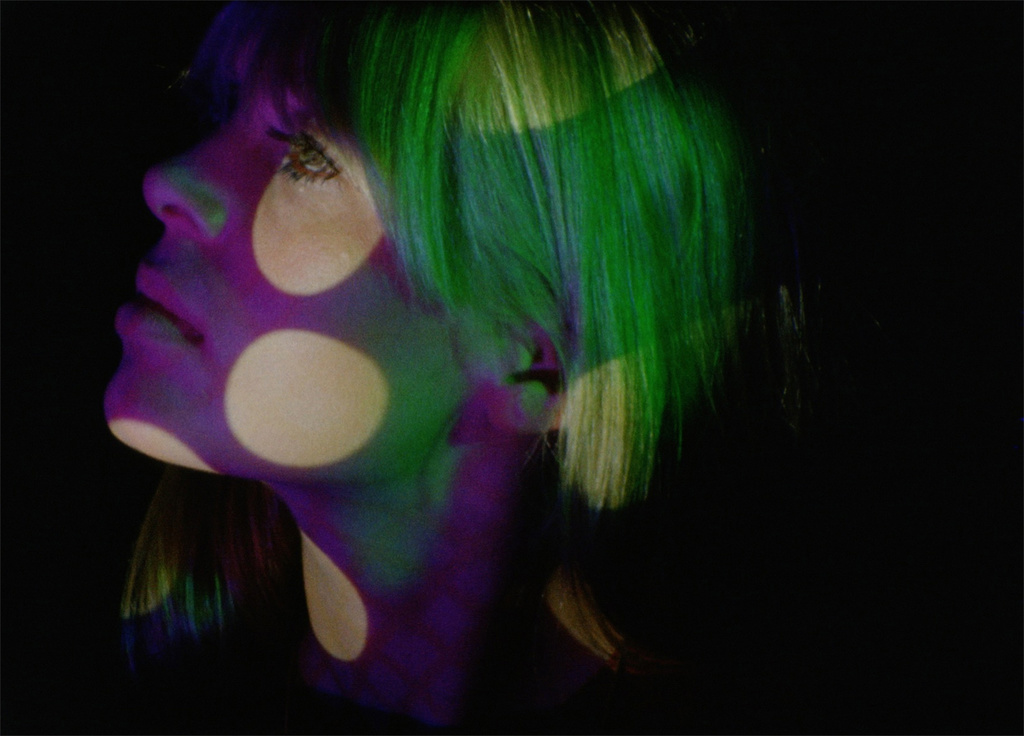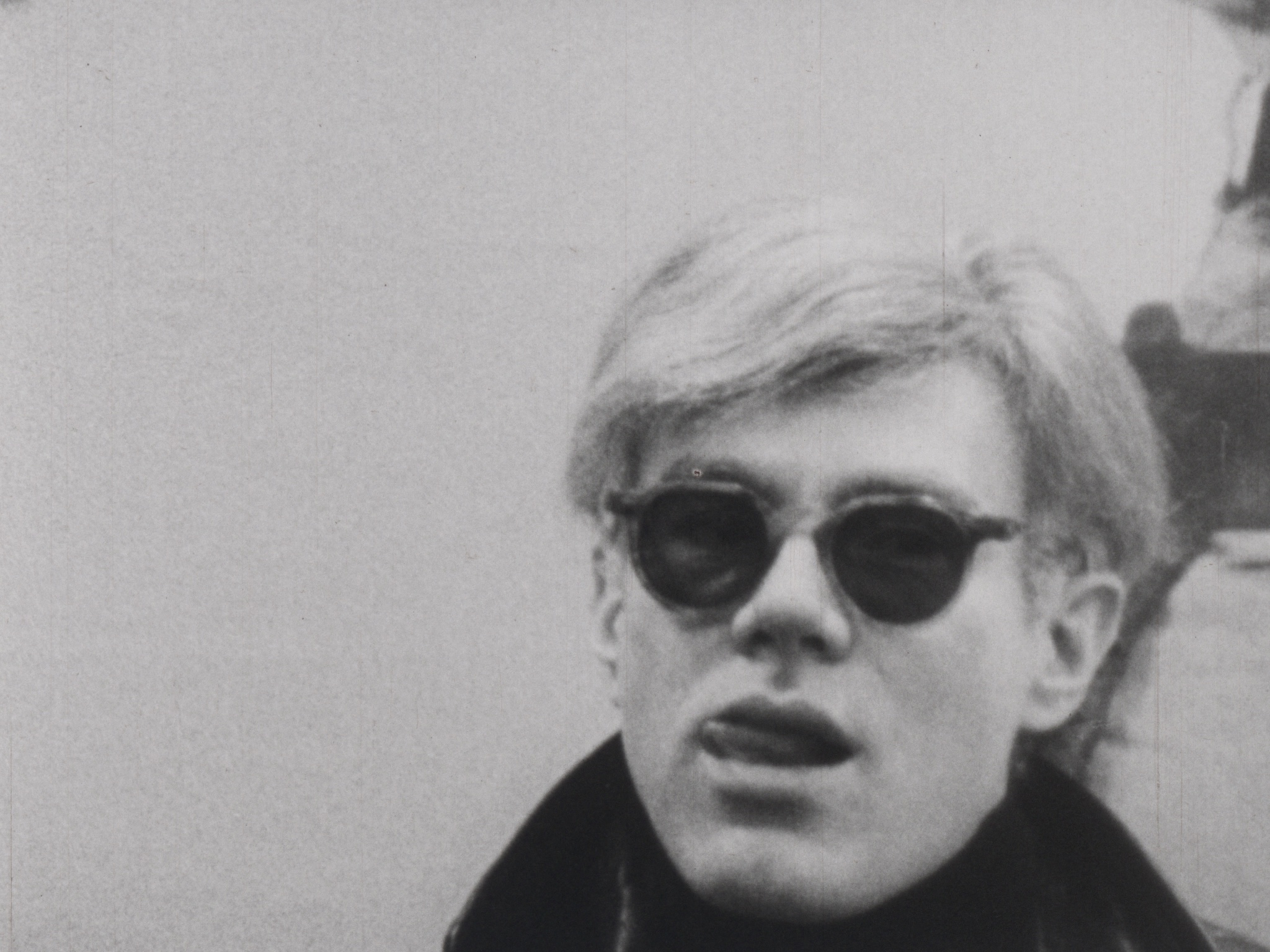
[Indiana University Media School PhD student Anthony Silvestri was kind enough to write up a blog post about The Chelsea Girls (Andy Warhol, 1996) which will be playing at the IU Libraries Screening Room at Tuesday, January 22 at 7:00 PM. Click here to reserve your seat: https://libraries.indiana.edu/chelsea-girls-underground-cinema-16mm-film-screening-extravaganza. Thanks, Anthony, for writing this up and for programming the film!]
“On The Chelsea Girls”
Anthony Silvestri
In 1966, Andy Warhol released his silver clouds, an art installation consisting of floating silver balloons inflated with air and helium, in New York.

Intended as gesture to bid farewell to his career as a painter, the pop artist would later recount that “it turned out they didn’t float away and we were stuck with them, so I guessed I wasn’t really finished with art.” As with most facets of Warhol’s self-presentation, there’s a certain contradiction to his anecdotal reminiscence. In interviews of the era, such as the educational short Warhol and Lichtenstein (conveniently preserved as part of the Moving Image Archive’s collection), Warhol clearly states he is finished with painting, espousing an interest in his projects on celluloid and newfound relationship with the Velvet Underground. Yet, devotees will attest to the fact that the artist still had a lively oeuvre of non-cinematic visual art after 1966, including such influential works as his screen prints of Mao Zedong and his Flowers series, as well as an imagining of Sigmund Freud.
At the time of the silver clouds’ release, Warhol was notable for pioneering a unique style of filmmaking that preserved the “leftovers” of filmic content through the presentation of entire reels without editing. The resultant early films include such masterworks as Kiss (1963), Eat (1963) Sleep (1963) and, perhaps his most (in)famous silent effort, Empire (1964), which features continuous footage of the Empire State Building shot over a period of eight hours. If the daunting prospects of viewing such works in their entirety dissuaded the mainstream public from engaging with Warhol as a filmmaker on the same level as they would with his work as an artist, the popular accounts accompanying them only further cultivated a mythology in which these were works that could be talked about without viewing. The story goes: when tied to a chair at the filmmaker’s co-op in New York during a screening of one of his films, Warhol found a way to escape the ropes that bound him to his seat, unwilling to submit himself to the viewing experience his films required. In the wake of such anecdotes, it is no surprise that his moving image work is still very rarely screened, and the opportunities to view any of Warhol’s early works in their proper format are increasingly scant outside of large cities or urban spaces with ties to the artist. After all, who needs to watch five hours of John Giorno sleeping to get it?
Yet, the further one delves into his oeuvre, the more astounding the breadth of his experiments become. I, myself, am interested in the artist’s Time Capsules: brown boxes in which Warhol stored ephemera, clothing, gifts, refuse and more, an autobiographical archival collection that was intended as just another branded commodity that could potentially be sold. The durational quality of his work on film, as well as the multitude of screen tests he produced, resonates with these items. The presentation of uncut time in his early films and the improvisational quality of Warhol’s early work could be suggested as a multi-authored archive of the 1960s Underground, preserving the rotating collection of cast members and performers within the Factory, especially as they often abandon traditional narrative structure. As others have noted, the longer the cameras rolled, the more authentic their behavior often became. In fact, there is now a revitalized field of study on Warhol’s moving image work that has been advanced in the last decade: both Douglas Crimp and J.J. Murphy have published monographs re-viewing his important contributions to film history. Just a few years ago, the Warhol Museum and the Museum of Modern Art began a collaborative project to digitize all of Warhol’s films that they be more accessible and widely viewed by a public that has lacked the opportunity to encounter this side of the famed artist’s oeuvre. On January 22nd, we’re excited to present The Chelsea Girls in the Screening Room at the Moving Image Archive on 16mm, preserving the film’s ties to the medium on which it was filmed and giving the community the opportunity to revisit Warhol’s importance as a filmmaker.

The Chelsea Girls was originally released in New York in 1966—the same year that the silver clouds would refuse to float away. The Chelsea Girls would coincide perfectly with this installation as it became an outlier in Warhol’s early filmography: the only commercial success he produced prior to being shot by Valerie Solanas. It builds upon many of the tropes of his work and compiles an amalgam of familiar faces and crew members stretching the expanse of his career, including Paul Morrissey, the director who would eventually lead Warhol out of the avant-garde and into commercial filmmaking for good. The Chelsea Girls picks upon a common trope of Warhol’s early film in which we are asked to consider the space of filmmaking. The physical location of Warhol’s early work is often prominent—locales such as the Factory, the Chelsea Hotel, or the Empire State Building are often made apparent. This emphasis would come at the behest of scenarists like Ronald Tavel when Warhol, weary of a film’s narrative, would point the camera away from the action just as it reached its climactic moment and focus on the space in which the film was shot rather in lieu of a traditional emphasis like story, seemingly referencing the impact of location on film. However, off screen space is equally essential in considering the work of Warhol, often shown in nontraditional settings. One need look no further than the inclusions of work such as Vinyl in Andy Warhol’s Exploding Plastic Inevitable installations. In this setting, the films would run—multiple at the same time—while the Velvet Underground played and lights pulsed through the space, creating an overloaded, multimedia sensory experience in which our traditional notions of the space of cinematic viewing and the purpose of film are questioned.
In The Chelsea Girls, we are promised (or were promised, according to its traditional billing) eight hours of a new Warhol film. However, this time becomes condensed through its spatialization—the actual show runs about half that time. Those that are aware of the film will know that this is because it involves projecting two reels, each an “episode” presenting the life of Warhol’s superstars inside the Chelsea Hotel, simultaneously in what is just one of the filmmaker’s double projection efforts (both The John [1966] and Outer and Inner Space [1966] utilize this technique as well). This fundamentally changes the space of the screen in a way that, as many others have noted, results in a sort of perceptual dissonance for the spectator. You must choose if you are to focus on one reel, the other, or to be overwhelmed attempting to watch both at once. However, with this innovative use of space, Warhol also draws our attention to the off screen or hidden space of our cinematic experience by accentuating the authorship of film through projection-as-performance.
We are not generally attuned to the control that projectionists have over our experience of film, yet since its release Warhol’s The Chelsea Girls has demanded that we think of these skilled technicians as equally important authors. In early screenings, this was accomplished by a laissez-faire approach to the structure of the film. When The Chelsea Girls premiered, projectionists would pick and choose which reels to show when, and screenings would be entirely different from performance to performance as what material was included, what auditory track was heard, and what order the events were shown in continually evolved depending on the technicians’ choices. If we usually think of the content of film as stable and unchanging, The Chelsea Girls has, historically, rebuked this notion through its continual change. As much as Warhol would be responsible for replacing reels, so too would projectionists be responsible for the final product—what audiences saw and heard—in the early days of its run.
Even as the film as become more codified, the unique aspect of split-screen ensures that each screening will be different due to the contingency of projection. Instructions are now given as to what order—but with only an approximate timing for the change of visuals and audio levels. For example, while Reel #7: Mario Sings Two Songs, is being threaded we are allowed to hear the sound of Reel #6: Hanoi Hannah and Guests. Depending how long the projectionist takes to complete this act, one might hear more (or less) than they have in previous screenings. Likewise, approximately twenty minutes into Reel #11, Pope Ondine, the sound switches to the beautiful, final reel of the film, Nico Crying. Whether you hear more, or less, of the Velvet Underground’s soundtrack will be wholly dependent on the timing dictated by our projectionists for the evening.

This means that, even if you have seen The Chelsea Girls in the past, you have never seen it in like it will be shown in the Moving Image Archive, and, counter to our notions of film as a mechanically reproducible experience, you will never have the opportunity to see this version of the film again. For returning viewers, you will have a different experience and see a different The Chelsea Girls than you have in the past. For new audience members, this is your first exposure to The Chelsea Girls, and no others will match it should you be lucky enough to see it more. This quality of The Chelsea Girls makes seizing the rare opportunities to view the film in cinematic spaces, projected on 16mm, and engaging in repeat viewings all the more important. While you can expect the same events and people to reappear, there will always be one essential difference; for this screening, The Chelsea Girls will be equally constructed in the offscreen space by the projectionists that are controlling our experience of the film off screen: Jamie Thomas and Justin Dennis. They will be the “authors” of our experience of The Chelsea Girls in a way that traditional films rarely recognize.
Especially as we experience movies more and more through DCP and less on celluloid—including, quite possibly, the prospects of a newly digitized version of The Chelsea Girls—issues such as these become an essential region of mediation on what forms our experience of cinema, who is responsible for it, and how the possibility of this unique spatial experience is becoming lost.
For making this complicated screening possible and providing funding, thanks go out to: Joan Hawkins, Greg Waller, and the Cinema and Media Studies program at the Media School as well as Andy Uhrich, Jamie Thomas and the Moving Image Archive for excitedly accepting our request, planning it with us, and making it happen.

Leave a Reply